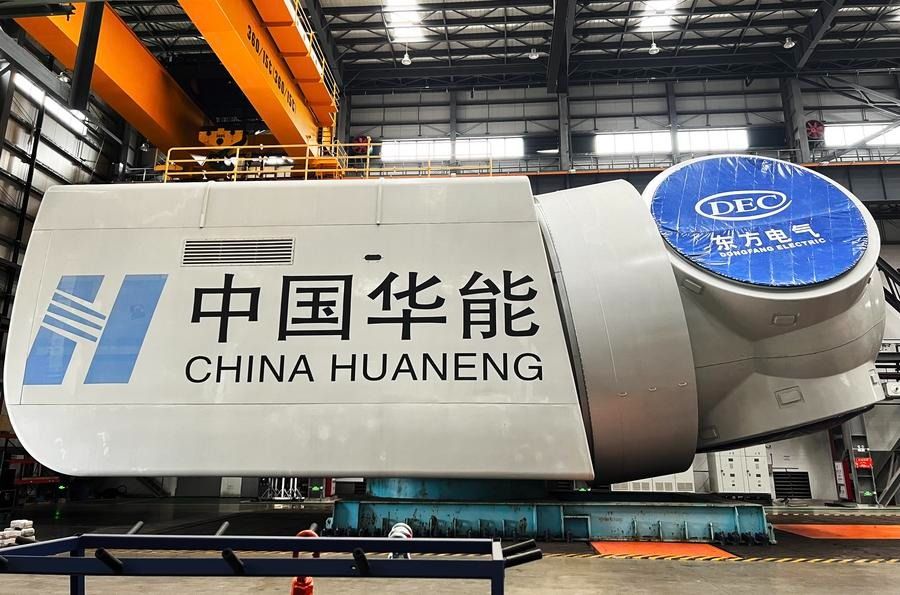
BEIJING: China has marked a significant milestone in renewable energy technology with the unveiling of the world’s most powerful direct-drive floating wind turbine. This innovative development is a joint effort by state-owned enterprises China Huaneng Group and Dongfang Electric Corporation. The 17-megawatt turbine officially rolled off the production line on Thursday in the coastal city of Fuqing, Fujian province, as confirmed by China Huaneng Group to Xinhua on Saturday, July 12.
A single unit of this turbine is capable of generating 68 million kilowatt-hours of clean electricity annually, which is sufficient to power approximately 40,000 households. The turbine is set to undergo real-world testing in the waters off Yangjiang, located in South China’s Guangdong province, according to China Huaneng Group.
Engineering Marvel and Operational Excellence
The turbine boasts an operational availability rate exceeding 99 percent, a testament to its engineering prowess. It features a record-breaking 262-meter rotor diameter with a swept area of approximately 53,000 square meters, equivalent to 7.5 standard soccer fields. Standing at 152 meters tall, its hub reaches nearly the height of a 50-story residential building.
Designed to withstand extreme maritime conditions, the turbine can endure waves over 24 meters and typhoons at level 17. Its unique stabilization technology allows for continuous power generation even when the floating platform tilts at extreme angles. Liu Xin, director of the offshore wind division at China Huaneng Clean Energy Research Institute, emphasized the turbine’s adaptability, noting that its integrated intelligent sensing system enables holistic stability control for safe and efficient operation in complex deep-sea environments.
Technological Breakthroughs and Domestic Production
The project’s research and development team achieved significant technological breakthroughs in floating wind power system coupling simulation technology and high-fidelity model testing techniques. Notably, all core components, including blades, generators, and transformers, are domestically produced, featuring China’s first large-diameter main shaft bearing.
This technological advancement paves the way for harnessing China’s vast deep-sea wind resources. According to the energy research institute under the National Development and Reform Commission, while nearshore waters (5-50 meters deep) offer around 500 GW of technically developable wind capacity, deep-sea resources are estimated to be three to four times this volume.
Global Implications and Future Prospects
Data from the Global Wind Energy Council (GWEC) highlights the global significance of this development, showing that over 80 percent of offshore wind resources are located in waters deeper than 60 meters. Floating wind power generation technology and solutions are poised to further unlock the potential of deep-water wind energy, according to GWEC.
By the end of 2024, the global installed capacity of floating wind power is expected to reach 278 megawatts, with Norway, the United Kingdom, China, and France leading as the top four markets, GWEC stated.
This announcement comes as countries around the world are increasingly investing in renewable energy to combat climate change and reduce reliance on fossil fuels. China’s latest achievement in floating wind technology not only underscores its commitment to clean energy but also positions it as a leader in the global renewable energy market.
As the world looks to transition towards more sustainable energy sources, the successful deployment and operation of this powerful turbine could serve as a model for future developments in offshore wind energy. The implications for energy policy, economic growth, and environmental sustainability are profound, with the potential to transform energy landscapes worldwide.






